This is the Argus SLR, a fully mechanical 35mm single lens reflex camera. The Argus SLR was produced for the Argus Corporation of Ann Arbor, Michigan by Mamiya Optical in Tokyo, Japan and was produced from 1962 to 1964. The camera is a variant of the Mamiya Prismat NP which itself is also a variant of the Nikkorex F, sharing the same body and all of the same features except the Argus having a unique bayonet lens mount unique to this camera. This was the first SLR camera to have the Argus name, none of which were made by Argus themselves. A selection of other Argus SLRs would be produced by other Japanese companies in the years to follow.
Film Type: 135 (35mm)
Lens: 58mm f/1.7 Argus-Sekor coated 6-elements in 4-groups, 35mm f/2.8 Argus coated 6-elements in 5-groups
Lens Mount: Argus Bayonet
Focus: 1.6 feet to Infinity (both lenses)
Viewfinder: Fixed SLR Pentaprism
Shutter: Cloth Focal Plane
Speeds: B, 1 – 1/1000 seconds
Exposure Meter: None
Battery: None
Flash Mount: FP and X Flash Sync
Weight: 1065 grams (w/ 35mm lens), 1033 grams (w/ 58mm lens), 815 grams (w/ meter no lens), 671 grams (body only)
Manual: https://www.cameramanuals.org/argus/argus_slr.pdf
How these ratings work |
The Argus SLR was both Argus’s first ever Single Lens Reflex and the companies first camera whose construction was outsourced to another company, but it was also the company’s last attempt at building a quality camera that could compete with others being made at the time. This Mamiya built body and its lenses produce images of very high quality, and for the time the camera was offered, was a good value. Unfortunately, continued mismanagement by Argus and a proprietary lens mount not shared by any other camera, doomed the Argus SLR into obscurity. | ||||||
| Images | Handling | Features | Viewfinder | Feel & Beauty | History | Age | |
| 2 | 1 | 2 | 1 | 2 | 1 | 20% | |
| Bonus | none | ||||||
| Final Score | 10.8 | ||||||
History
Of all the American companies who produced cameras in the 20th century, Argus was second only to Kodak in terms of sales and brand recognition. If you consider that despite their tremendous success, Kodak was a film first company, whereas Argus largely stayed within the camera making business, you could say that Argus was the most successful American camera company of all time.

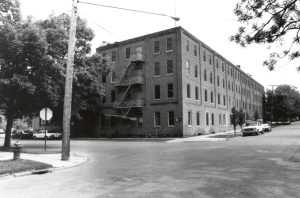
Based in Ann Arbor, MI, Argus was founded in 1931 as the International Radio Corporation by a group of 10 investors including Ann Arbor mayor, William Brown and businessman Charles Verschoor. The new company was located in the former headquarters of the Argus Furniture Company, located at 405 Fourth Street.
Back then, IRC made a variety of different radios, many of which had pioneering designs largely using Bakelite plastic, a relatively new material in the construction of radios and other electronic appliances. IRC’s products included the Kadette which was the first mass produced AC/DC radio. Bakelite was a very flexible product that could be made in a variety of colors, including a wood grain which gave it a look of a much more expensive radio. It sold extremely well and allowed IRC to release other Kadette products like the Kadette Jr, which was the world’s first pocket radio, and the Kadette Clockette which was one of the first clock radios.
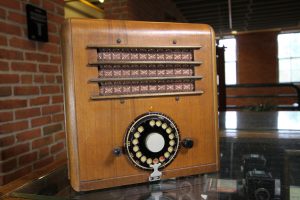
In the first half of the 1930s, IRC’s radio business was so successful in that it was the only company in Ann Arbor that was able to pay dividends to its share holders during the Great Depression. Nearby Detroit was heavily hit by the recession, so in the entire state of Michigan, IRC was one of the few financial bright spots.
By the mid 30s as the depression dragged on, other competing radio manufacturers were able to make inexpensive radios that ate into IRC’s profits, so the company needed to find a way to diversify its product offerings. On a trip to Germany, Charles Verschoor looked at a Leica camera and thought that with his expertise at making inexpensive items using Bakelite, that he could do for the camera industry, what he did for the radio industry.
IRC would release the Argus Model A camera in 1936 to immediate success. Like its radio division, the Argus Model A was an inexpensive Bakelite body camera that brought photography into a price range that didn’t have a lot of competition. The price of the Argus A then was $10 (some sites say $12.50) which meant it could be afforded by the average lower to middle class family.


The Argus A was the very first American made camera to use Kodak’s new 135 format 35mm film cassette. Even though Kodak had already been selling the Kodak Retina for 2 years prior to the Model A’s introduction, the Retina was designed and built by Kodak AG Stuttgart, Kodak’s German subsidiary.
IRC’s first camera sold very well, so well in fact, that the company decided to stop radio production altogether and focus entirely on producing cameras. In 1938, due to the success of its cameras, IRC officially became known as the Argus Corporation and sold off its radio division to an entirely new company.
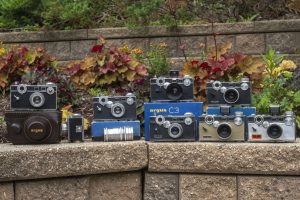
Sensing an even greater need to offer more competitive features in a camera at a low price point, later that year, Argus once again tapped Gustave Fassin for the design of their next camera, the Argus C.
Between the years 1938 and 1939, three versions of the Argus C were released, the original, and two updated models called the C2 and C3, each adding a coupled rangefinder and flash synchronization. All three models were produced concurrently until 1942 and which time production stopped due to the war.
After World War II, only the C3 would return to production and would remain Argus’s best selling model, staying in production until 1966. Even more impressive than its 28 year lifespan was that Argus continued to make more and more advanced models that were released after the C3, but for one reason or another, didn’t sell as well.
The 1950s were not kind to American camera makers. The return of the German camera market after the war and the rise of the Japanese photo industry in the 1950s was too much for American makers to compete with. Exactly why Americans couldn’t compete with the Germans or Japanese is debatable as Americans had no problem building large things like automobiles, space ships, bridges, and skyscrapers, but for one reason or another, we didn’t have a knack for fine precision devices like cameras.
One by one, American camera makers like like Clarus, Ciro, and Universal either went out of business, or pivoted their business to other products like Kodak and Bell & Howell.
For companies like Argus that persevered, they took the route of ending US manufacturing and outsourcing production to companies in other countries. A variety of ownership changes, first in January 1957 to Sylvania (who themselves was a subsidiary of GTE) and then again in March 1962 by Mansfield Industries likely added to the shift in priorities for the company.

Around the time of the acquisition by Mansfield, Argus would release their first ever single lens reflex camera. SLRs were already well established as the preferred camera of choice for professional and advanced amateur photographers, but there still weren’t many options for affordable options. With a total lack of experience in building an SLR and an increasingly competitive market, Argus must have made the decision to reach out to another company for help in building their first camera.
Before I go any farther, I should take a step back and clarify that Argus’s 1962 SLR was not their first attempt at making a SLR camera. Thanks to some incredibly detailed research by Phil Sterritt, Ron Norwood, Bob Kelly, and Mike Reitsma, I was able to learn from a 2001 interview between Phil and Bill Patton, an Argus design engineer that development of an Argus SLR began in Stuttgart, Germany in 1955.
Back then, Argus was coming off a period of great profitability. Profits for Argus soared between 1949 to 1954 from $6 million to $22 million, but by 1955, sales hit a wall. The company’s most successful model, the C3 was nearly two decades old and with an ever increasing onslaught of inexpensive and innovative cameras coming out of Germany and Japan, the company knew they needed to try something new.
Hoping to boost sales of the company’s camera and projector lines, in the summer of 1955 the company would open Argus Cameras GmbH in Stuttgart, West Germany where they aimed to develop products for sale in Europe, Africa, and other export nations.
One such product was an all new 35mm SLR that according to Bill Patton, existed in working form. In his 2001 interview with Phil Sterritt, Patton remembered that the camera was an all new design and not a rebadge of someone else’s camera. He offered little specifics other than it had an interchangeable lens mount and that the Zeiss-Ikon Contaflex from 1953 was an inspiration for them.
A working version of the camera was brought back to Ann Arbor where it received a positive reception, but ultimately, was never built. Exactly why Argus went through the effort of building a new interchangeable lens SLR in Germany, bringing it back to America, and then scrapping the project is unclear, but changes within the entire company likely doomed it. The company was losing money and was already in talks to be purchased by Sylvania and there was a need to clean up the company’s balance sheet. In addition to the camera’s demise, the entire Stuttgart operation was shuttered, and Argus consolidated its product lines, killing any hope for a new SLR.
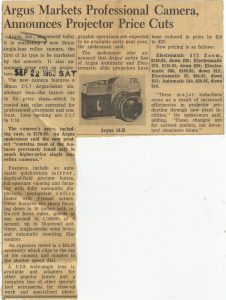
Another six years would pass before Argus would again consider making an SLR. This time though, the company had been sold twice, and the current ownership of Mansfield likely wanted to make a big splash with an all new model. Argus camera sales were down, but the company’s slide projectors were selling well so the company must have seen value in an all new Argus branded camera.
In my research for this article, I could never find any information about how Argus and Mamiya formed the relationship they did, but however it happened, in late 1962 a new camera simply called the Argus SLR would go on sale. The camera was a rebadge of Mamiya’s own Prismat NP with the only difference being that instead of an Exakta lens mount like the original, the Argus would have an all new Argus SLR specific bayonet mount and would come with a 6-elememt Argus-Sekor 58mm f/1.7 lens.
Only two other lenses were ever made for the mount, a 35mm f/2.8 and 135mm f/2.8. In the April 1963 issue of Popular Photography, in his “Newsfront” column David B. Eisendrath writes that a third lens, an f/3.5 90-140mm zoom lens with a sub-$100 price would be announced later that year. It is unclear whether or a not a lens like this was ever finished however, as it doesn’t appear in any other known publication. For lenses of other focal lengths, adapters were available to mount both Exakta and M42 screw mount lenses to the Argus bayonet.
Mamiya would also produce variants of the Prismat NP for Nippon Kogaku as the Nikkorex F and for the Sears Roebuck & Company who would sell the camera first as the Sears 32A and Tower 32A, both with the Prismat’s Exakta mount. A slightly improved model called the 32B was also available which added a split image focus aide in the viewfinder, added a clip on accessory shoe, relocated the flash sync ports to the side, and relocated the ASA film speed reminder to beneath the rewind knob.
In the case of the Nikkorex, both cameras share the same basic chassis, and very similar looking top and bottom plates, the cameras have a completely different shutter. In the Nikkorex F is the vertically traveling Copal Square shutter as opposed to just a plan old cloth focal plane shutter in the other Prismat clones. The Nikkorex would also use the Nikon F-mount and have a depth of field preview button not available on the other variants.
In the gallery above, I have a Tower 37A (same as the 32A just with a top 1/500 shutter speed), the Argus SLR, and Nikkorex F. As you can see, the Tower and Argus look almost identical, whereas the Nikkorex has a different front and a taller top plate courtesy of its vertically traveling shutter. From top down and behind, all three cameras look very similar.
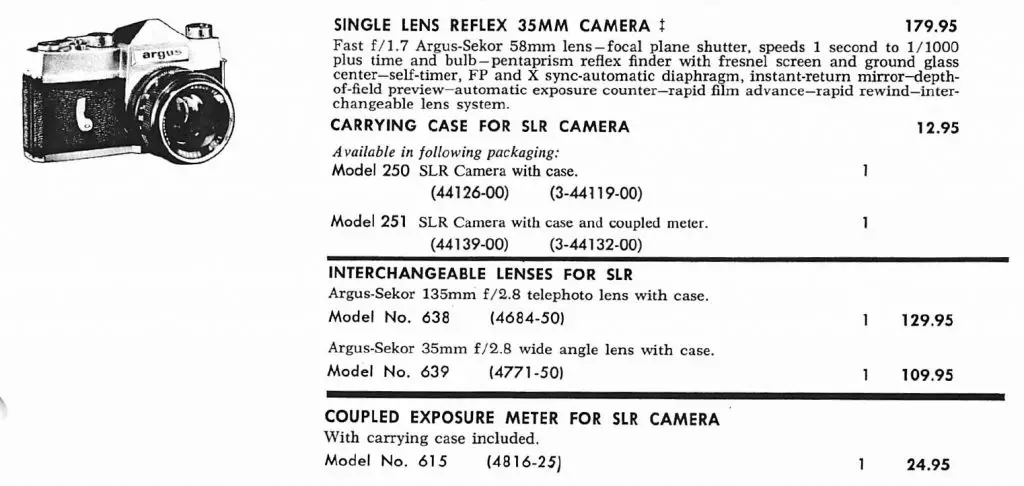
The Argus SLR originally sold for $192.50 which included a leather case, or $179.95 without. When adjusted for inflation, these prices compare today to $1650 and $1550 respectively. This was hardly an economy price that previous Argus customers would have been used to but perhaps the allure of an American name was enough to convince enough people to buy it.
Argus Model 250: There are quite a few references online to the Argus SLR as the Model 250, but this does not appear to be any sort of official designation of the camera. In the price list above, “Model 250” appears to be a catalog number for the camera with case. “Model 251” is the camera, case, and meter. Other versions of Argus price lists sometimes substitute the word “Part” for “Model” further suggesting these were nothing more than catalog numbers rather than official names for the camera.

In the short review to the right, which appeared in the August 1963 issue of Popular Photography the article quickly reiterates my point as this being a much more expensive Argus. In the next paragraph, reviewer Harold Martin quickly establishes the value of the camera with an excellent Japanese made 6-element lens and all the modern features you’d expect from an SLR such as an instant return mirror, automatic diaphragm, flash sync, rapid film advance and rewind, and a self timer. Cheaper SLRs did exist at the time, but almost always with a fixed lens and missing one or more of the Argus’s features.
The overall tone of the review is positive, with Martin continuing to praise the smoothness of the camera and lens, the bright viewfinder, close focusing ability of the lens, accurate shutter, and excellent build quality. In the end, he declares it easy to recommend for a moderately priced camera with such high performance.
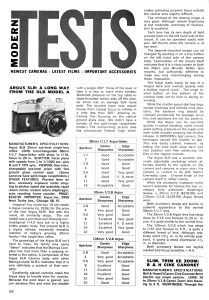
In his review of the Argus SLR from the October 1963 issue of Modern Photography, Herbert Keppler offers many of the same positive comments as Harold Martin did, but was a little more critical of the thick Fresnel pattern on the ground glass which made focusing near the edges more difficult and that he noted that the shutter could easily be jammed by applying small amounts of pressure to the film advance lever while firing the shutter. Otherwise he gave generally good remarks to the camera, considering it a value much like the earlier review.
It is not clear exactly how long the Argus SLR was produced, but in his book, “Argomania: A Look at Argus Cameras and the Company That Made Them”, Henry J. Gambino says that there was a five year gap between SLRs when the Argus/Cosina STL was released in 1970, which suggests the original Argus SLR was produced until 1965.
Throughout its life, there was at least one revision to the camera which relocated the two flash sync ports from the back of the camera to the side. Herbert Keppler’s review notes that some come with a split image focus aide, which likely also happened at the same time. The example I had for this article has both the split image focus aide and flash ports on the side, suggesting a later camera.
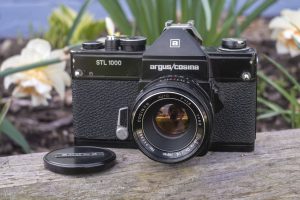
In 1970, Argus would release its next SLR, this time partnering with Cosina. The camera would make no attempt to hide its Cosina roots, being officially branded as the Argus/Cosina STL 1000. Unlike the original Argus SLR which at least made an attempt to be a finely crafted camera with modern features, the STL 1000 was a pretty generic camera with the M42 screw mount and a CdS match needle exposure meter. Later Argus SLRs would be produced by Chinon and Petri as well.
Today, if you walked into a room of camera collectors and announced you had an Argus SLR, the most deafening sound you’re likely to hear is that of a large collective yawn. While original Mamiya Prismats can sometimes fetch high prices on the collectors market, the Argus SLR almost always sneaks past collectors who either don’t realize what it is, or even if they do, have no interest in a 1960s camera with the name Argus on it.
If you’re willing to give it a chance, you’ll find the Argus SLR to be a pretty decent, fully mechanical early 1960s Japanese SLR. The camera is not overly large, has good ergonomics, a good lens, and competitive features for the era in which it was built. These cameras were not produced in large numbers, so finding one in good condition today will be a challenge, but if you were to come across one, trust me, you could do a lot worse!
My Thoughts
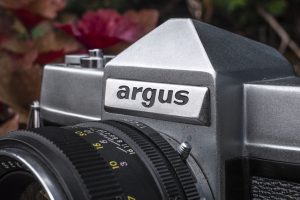
This Argus SLR is a loaner from my friend Mark Faulkner of TheGASHaus.com. Mark’s site is an online inventory of his several hundred camera collection that he uses as a personal database for which of his cameras he’s shot. The fact that it is online means others can witness his collection as it grows, along with his short thoughts on each model.
Although he lives on the other side of the country from me, Mark is a prolific traveler, so I’ve met him a couple of times as he’s passed through Chicago. It seems that Mark and I also share a passion for fermented beverages as well, so there’s no shortage of things to talk about when he comes around. In one previous visit, I had mentioned that I missed out on an Argus SLR that I was in a bidding war with someone else on, and after realizing which model it was, Mark offered to loan me his.
The Argus SLR, and the Mamiya Prismat NP that it is based on is from an era when features like an instant return mirror, open aperture composition, and a film advance lever were still considered new features in an SLR. It is a fully mechanical camera with no metering or electronics of any kind. This has the benefit of being incredibly simple to use, and also means that assuming it has not been abused in its life, can usually be found in good working condition/
When Mark’s Argus had arrived, I marveled at how good of shape it was, but also how heavy it was, or more specifically, the lens. While most fast 50mm prime lenses have some heft, when mounted to the camera, the Argus SLR tops the scales at 1033 grams (2.27 lbs), making it heavier than some TLRs! The lens accounts for more than one third of that, making for a very heavy camera.
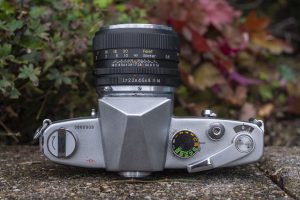
With the heft comes a good amount of balance and confidence in its use. The camera feels solid and well made, much like other top-tier 1960s Japanese SLRs. The top plate is simple and uncluttered. Going from left to right, the top plate has the rewind knob with a folding handle, the pentaprism bump, shutter speed dial, cable threaded shutter release, film advance lever, and automatic resetting exposure counter. The shutter speed dial has each shutter speed from 1-1000 plus B and T in a bright and easy to read type face, with speeds 60 and above in green, and 30 and below in orange to indicate that the camera should be stabilized. The film advance lever is geared, so that you can advance the film using one single 210 degree motion, or several smaller motions.
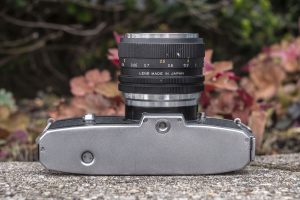
There’s not much to see on the camera’s bottom other than a centrally located 1/4″ tripod socket and rewind release button. When rewinding film, you only need to press the button once and you do not need to maintain pressure on it while rewinding. The camera will automatically resume normal film advance the next time you activate the film advance lever.
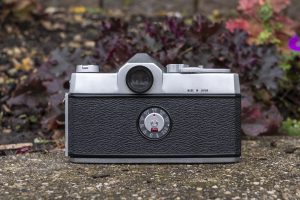
There are two variants to the Argus SLR, one with flash sync ports on the back, and a later version with them on the side. This example is the later kind with the sync ports on the side, so looking at the camera’s back, the only things here are the circular eyepiece for the viewfinder and a film reminder dial on the door. The viewfinder has a removable ring that can be unscrewed and replaced with viewfinder accessories like diopters and possibly even a right angle viewfinder. The Argus SLR accepts the same accessories as its cousin, the Nikkorex F which was also made by Mamiya.
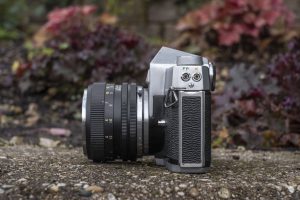
Opening the film compartment requires releasing the sliding lock on the camera’s left side, which is below the two FP and X sync ports.
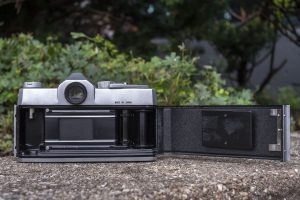
The right hinged door opens to reveal a pretty ordinary film compartment. Film transports from left to right onto a single slotted and fixed take up spool. The take up spool rotates clockwise, which means that the film is wound onto the spool in the opposite direction that it is in the cassette, which is said to help with film flatness. Inside the door, the film pressure plate is painted black metal with divots on it to help reduce friction as film transports through the camera. The original foam light seals found on these cameras are likely to be found in crumbling condition, so I would strongly recommend replacing them before attempting to shoot film through any Argus SLR that you might come across.
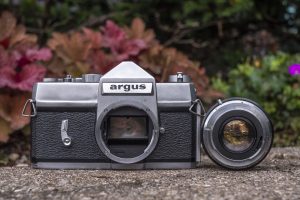
You can’t talk about an interchangeable lens SLR without talking about its lens mount, and in the case of the Argus SLR, we have a mount that for reasons I’ve never been able to reveal, Argus and Mamiya decided on an all new mount, never before used by any other camera before or after this one model. Mamiya already used the Exakta mount on Prismat versions of this camera and the Nikon-F mount on the Nikkorex F, so why come up with something completely new for this one rebranded camera for an American company who had never released an SLR before it? No one knows.
Perhaps even more amazing is that the three claw bayonet mount actually looks pretty good. The overall diameter of the mount is much wider than that of the Exata mount, and on par with the Nikon F mount meaning that had faster and heavier lenses been developed for it, there would have not been any issue with throat size or the camera’s ability to support heavier lenses. The mount has internal support for automatic diaphragms, something missing on the Exakta mount and some earlier bayonet mounts by Canon and Miranda. Argus bayonet lenses like the Argus-Sekor 58mm f/1.7 even had support for depth of field preview on the lens itself, something missing from other early SLR mounts. Had the Argus SLR been a success and evolved into a whole family of Argus mount cameras and lenses, it stood to reason that this mount could have been quite popular. Of course that’s not what happened, and this would not only be the only camera ever made with this mount but there would also only ever be three lenses for it.
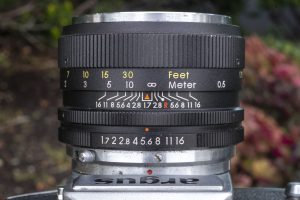
There may have only been three lenses ever made for the camera, and of the three, only the 58mm f/1.7 is anything remotely close to easy to find, but what a lens it was. From top down, nearest the mount is a chrome lever that activates the depth of field preview feature, in front of it an aperture ring with click stops from 1.7 to 16, then a fixed ring with a nicely detailed depth of field scale, and finally, a rather thick and very easy to grip and nicely dampened focus ring. Minimum focus is good at 1.6 feet, with infinity a full 330 degrees away. Whatever lube Mamiya used to dampen the lens helix, has held up nicely as this example was still smooth and fluid with just the right amount of resistance to not feel loose, but also not difficult to turn.
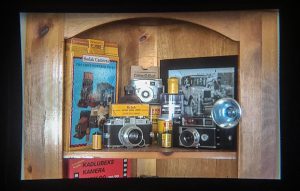
The viewfinder features a central split image focus aide, surrounded by a ground glass circle for precise focus. Around it is a circular Fresnel pattern with pronounced ridges. Later SLRs would benefit from a laser etched Fresnel pattern that almost completely disappears, but not on the Argus as it is clearly visible. Unlike some German SLRs like the Zeiss-Ikon Contarex in which the Fresnel area of the ground glass cannot be used for focusing, on the Argus it can. This can be somewhat distracting on dim subjects, but otherwise isn’t an issue. Brightness is even across the entire image, even in the corners. With the fast f/1.7 Argus-Sekor lens, brightness is not an issue, but with a slower lens it might be. I’ll likely never know though, as finding any other Argus SLR mount lenses is almost impossible as very few were ever made. The Nikkorex F has an identical viewfinder, so using that camera and mounting a slower f/3.5 lens, the viewfinder does become a bit darker, but is still very usable, suggesting the Argus would be the same.
For someone in 1962 shopping for a new SLR, it was probably pretty clear this Argus SLR wasn’t made by Argus, but for the price, it is clear a good amount of effort went into making this as good of a camera as the money would allow. Sure, it lacks a meter, or anything resembling a good lens selection, but if all you wanted was Japanese SLR with good ergonomics and an SLR lens, this camera was a bargain. Of course, lots of cameras look good on paper, but how do they shoot?
Argus SLR Lenses and Accessories
After being nearly 95% complete with this article, I got in touch with Argus collector Mike Reitsma who had a complete set of Argus SLR lenses, plus the meter and a couple other things and offered to send them to me to play with. I quickly shot a roll of film using the wide angle lens and am including those images in a separate gallery below. I mounted the (dead) meter and used both lens adapters, but did not shoot the camera with these.
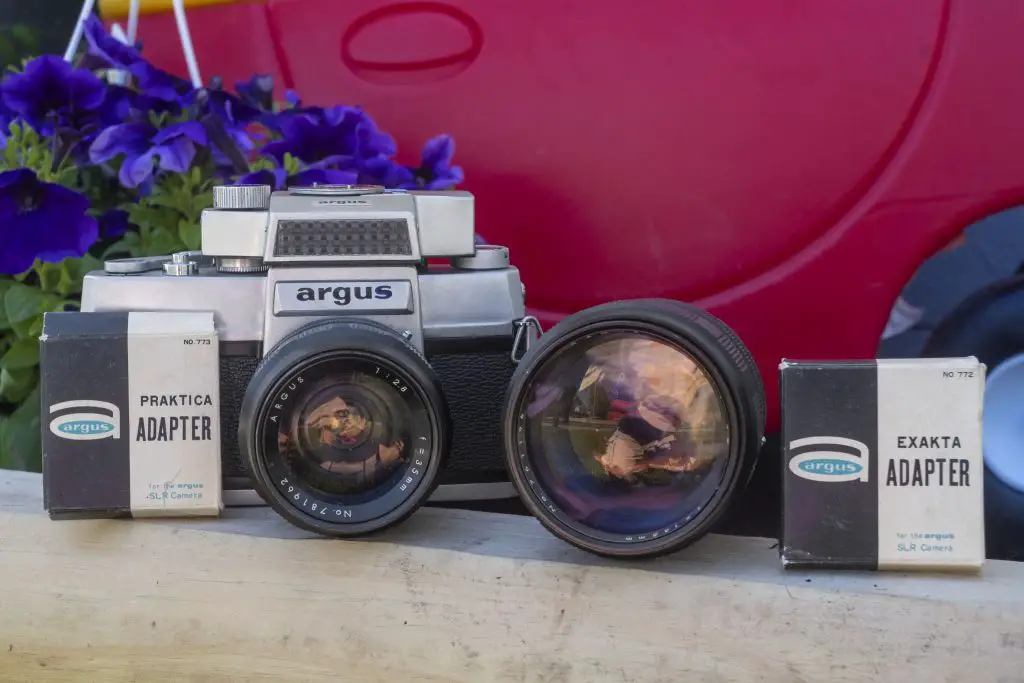
In the interest of showing off what the Argus SLR looked like as a complete kit, here is a gallery of images using my Argus SLR body with Mike’s lenses, meter, and both an Exakta and Praktica (M42) lens adapter.
I was quite enamored with both the look and performance of the 35mm wide angle lens, but the Argus 135mm f/2.8 telephoto lens is a monster! Weighing 659 grams by itself, when mounted to the already heavy body and adding the meter, the total package comes to neck breaking 1474 grams (3.25 lbs)!
The clip on meter is well designed and easy to use, but does have a rather complicated way of connecting to the camera. Unlike most clip on meters that hold onto some kind of mount around the eyepiece, this one requires installation of a special bracket with two connecting posts around the circular eyepiece. To install it, you must unscrew the black diopter ring from the eye piece, position the bracket in such a way that the connecting posts face toward the camera, and then screw the diopter back on to hold the bracket in place. Then, place the meter on top of the prism while squeezing on the two clamps so that they couple with the connecting posts on the bracket, while rotating the shutter speed dial so that the meter’s dial lines up with the camera’s dial, allowing for a secure fit. It is a much slower process than other clip on meters I’ve tried, but at the very least, once it is on, it is very secure.
I also included two images of the Argus SLR body with both the Praktica (M42) and Exakta adapters with two lenses I thought no one probably has ever mounted to an Argus SLR, a Petri Orikkor 50mm f/2 screw mount lens from the Petri Penta, and an Exakta mount Carl Zeiss Flektogon 35mm f/2.8. Installation of the screw mount lens was as easy as using any screw mount adapter is, but the Exakta mount requires you to first remove the connecting post from the inside of the lens mount before installing the adapter. In the image of the adapter’s instructions above, you can partially see this as the very first step.
My Results
I was on a Kodak Vision3 50D kick when I took the Argus SLR out for its inaugural roll. While I had no reason to think I needed an ASA 50 speed film to test this camera, I was confident in the shutter speeds that I could have used any film. As I have with other cameras that I’ve shot this film in, I shot it primarily outdoors to take advantage of its daylight color balance.











This second gallery was taken with the Argus wide angle lens that was loaned to me by Mike Reitsma. While I generally like wide angle lenses on any camera, the difference between the 35mm and the slightly longer 58mm standard lens (compared to a 50mm) seemed huge to me. I always felt the 58mm was a little too tight for general photography and loved the additional information I could get in view with the wide angle.

Mamiya was a respected maker of optical lenses, so it probably comes as no surprise to see that the 6-element Argus-Sekor 58mm f/1.7 lens delivered excellent results. With a brownish yellowing discoloration to the glass elements, not unlike what often happens to many Asahi Takumar lenses, the images shot on the Argus SLR lean towards the warm side. Using daylight balanced Vision3 50D film also helps to push the palette further towards warm colors, but overall, the images from the Argus were quite good.
Sharpness is excellent in the center and corner to corner. In the image of the camera store in the gallery above, I shot the camera wide open, and although there is a bit of softness in the corners, it is not out of line of other similar sub f/2 lenses of the day.
In hindsight, I wish I had shot some black and white through the Argus, and may still do that to see how well it handles a slow fine grain film like Kodak Panatomic-X. If I ever do that, I will be sure to update this gallery.
For now, I think it is safe to say that whatever apprehensions someone in 1962 might have had spending what was then the equivalent of $1650 at least could depend on a camera that was capable of making quality images with world class sharpness. Compared to other German and Japanese SLRs with similar features, the Argus was a bargain.
I enjoyed shooting the Argus SLR, but admit to having some of the same complaints as Herb Keppler did with the viewfinder. Although the Fresnel sections of the viewfinder can be used for focus, they somehow make detecting fine variances in focus difficult. Even with the center split image focus aide perfectly lined up on a vertical edge, the rest of the viewfinder is slightly vague, never quite looking as crisp as the viewfinder on say, a Nikon or Canon SLR from the same era. It is certainly not a deal breaker, but for someone like me with poor vision, it did cause me to miss focus a couple of times.
My only other nitpick is that although I appreciated that the film advance lever is geared to allow for several small motions, I prefer to wind cameras in one continuous motion, and the approximate 220 degree throw is quite far. With my right hand in a comfortable position to where my right index finger is resting on the shutter release, I have to reposition my hand to fully advance the lever, requiring me to move it back each time I want to take a photo.
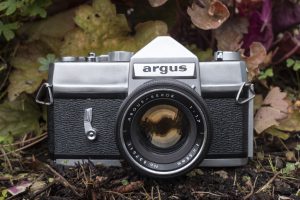
Beyond that though, the Argus SLR was a terrific first attempt for Argus. Their choice to work with Mamiya was a wise one, as the Prismat this was based off was good enough for Nippon Kogaku with the Nikkorex. I wish I knew more about why this camera got its own lens mount, but was never continued beyond that. I can only assume that the people at Argus planned on continuing with this line, producing more models with the same mount, but perhaps poor sales or changes in management caused a change in plans before that could happen.
I doubt this was anyone’s intention when deciding to call this camera the Argus SLR, but if you consider that Argus’s most successful camera, the C3, is known for its brick like shape and heft, the Argus SLR may not resemble a brick, but this is a heavy and solid camera that I would definitely not want to drop on my foot!
I like the Argus SLR, but will stop short of recommending it over other early 1960s SLRs, because if I’m being completely honest, nearly every early 1960s Japanese SLR was good. The bar was quite high in this segment, and while I only had two minor nitpicks for the Argus, there’s nothing about it that makes it more appealing than a dozen or more competing models. Still, there aren’t many good SLRs with American names on them, so if you just want something different, perhaps this is something worth looking into adding to your collection.
Related Posts You Might Enjoy
External Links
https://sites.google.com/site/casualcollectorproject/Home/argus
https://cameracollector.proboards.com/thread/4542/argus-slr
http://www.collection-appareils.fr/x/html/appareil-9772-Argus_SLR.html
http://forum.mflenses.com/argus-58mm-f1-7-mamiya-t24576,highlight,argus.html

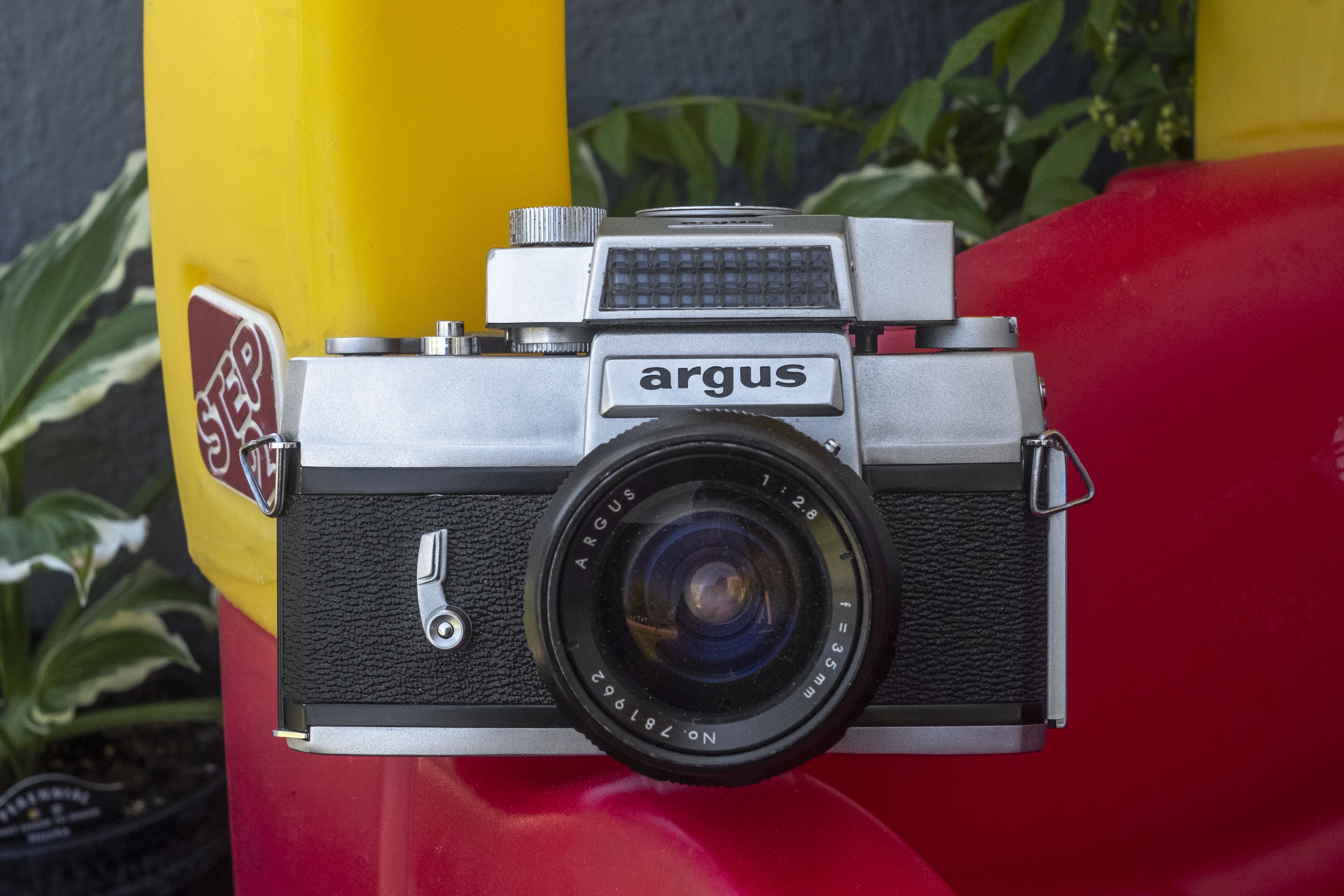
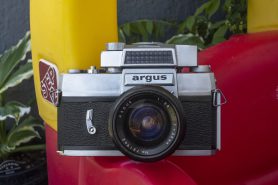
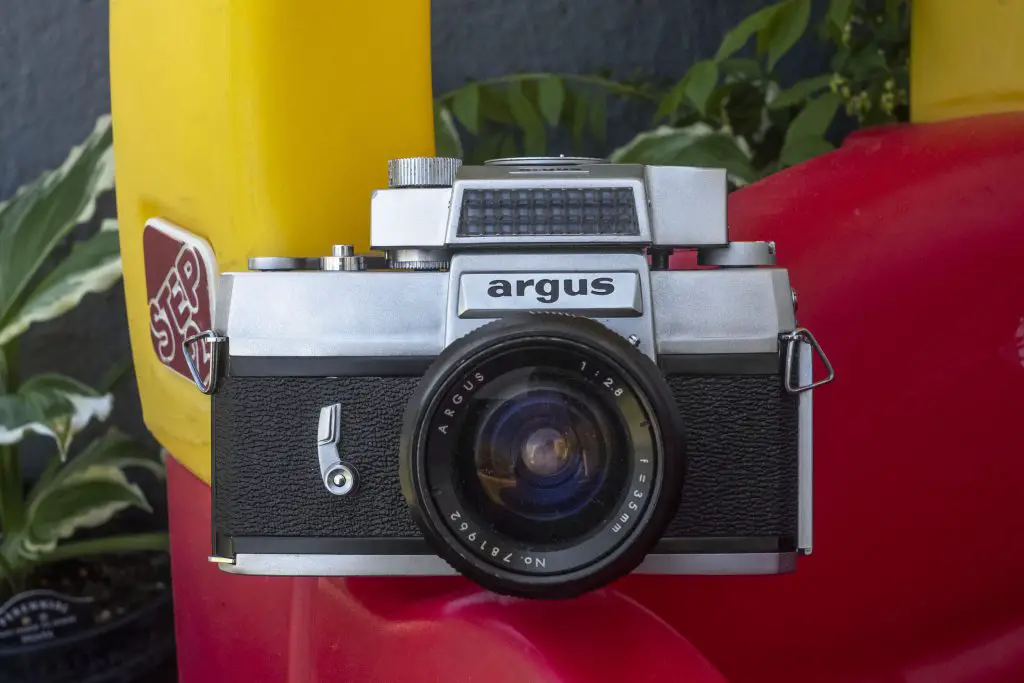
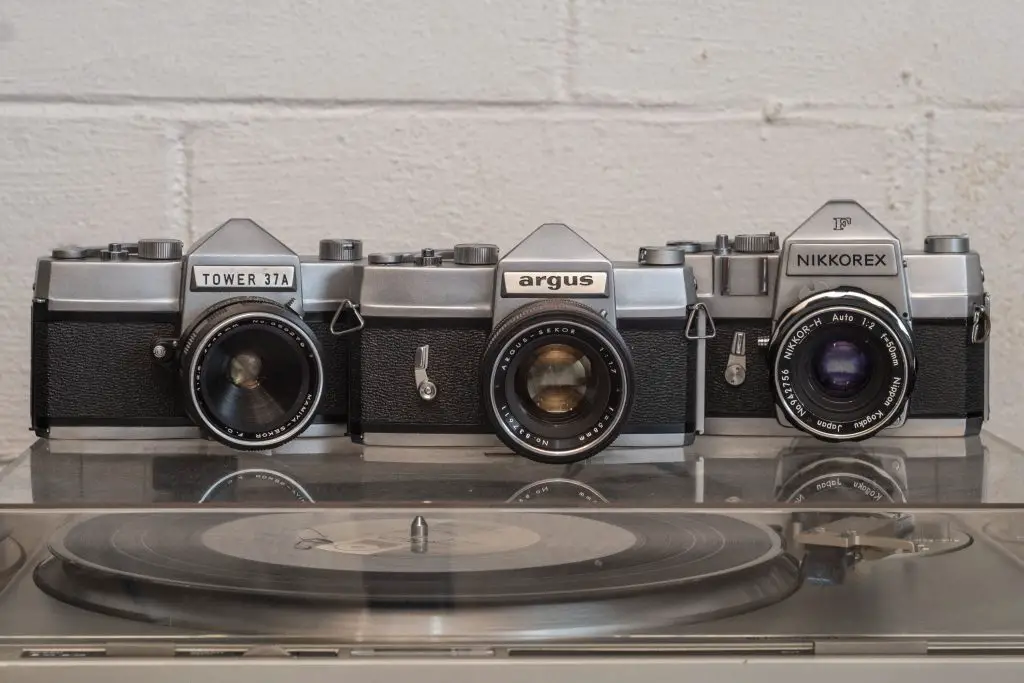
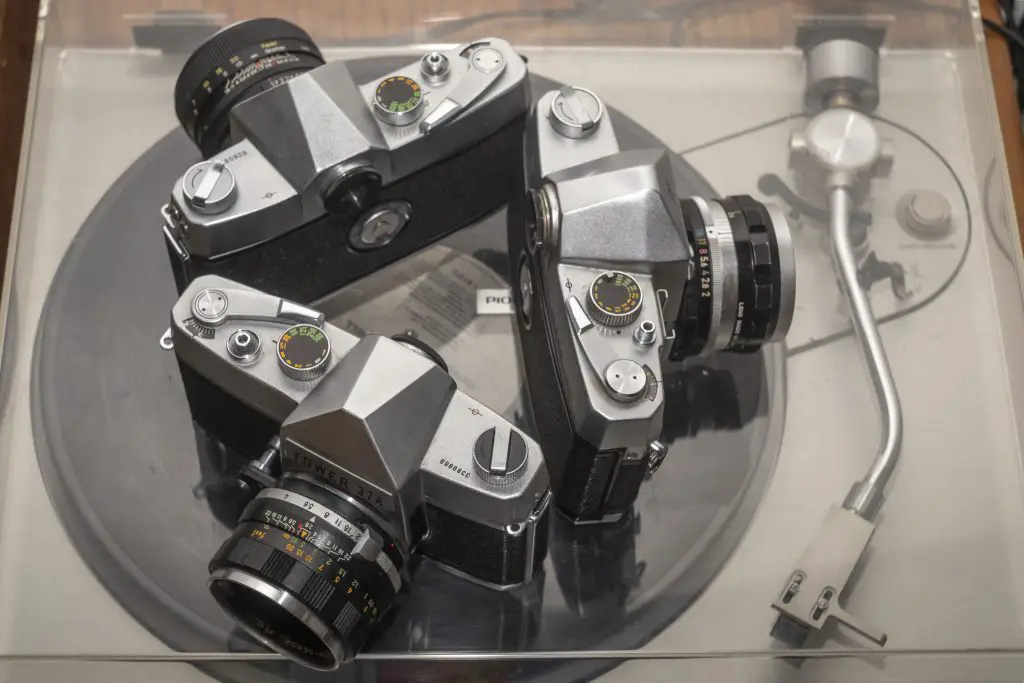
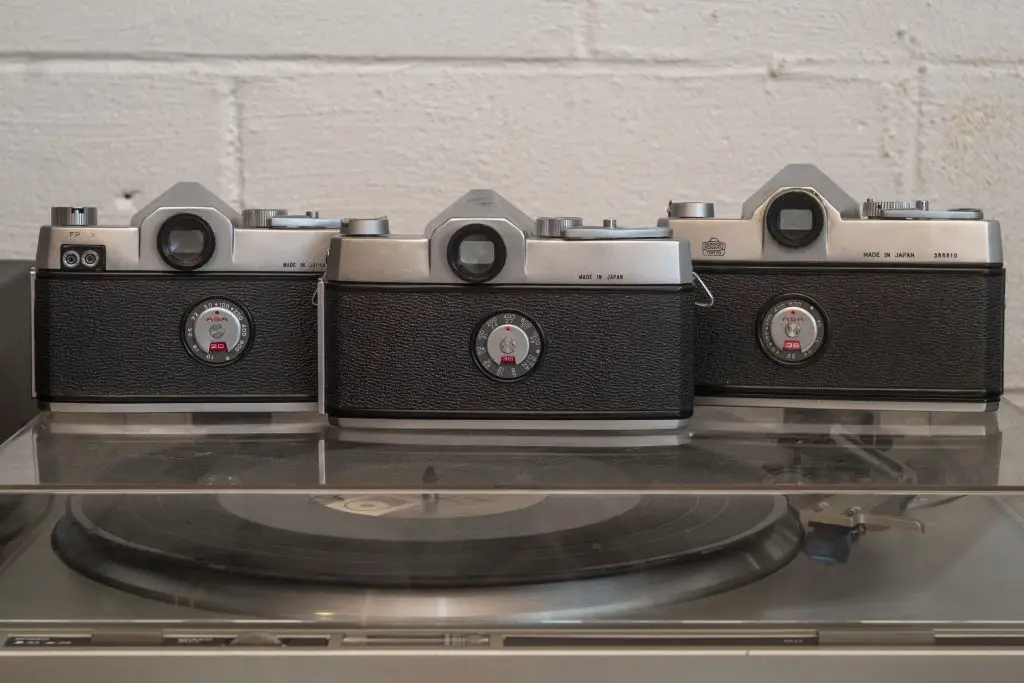
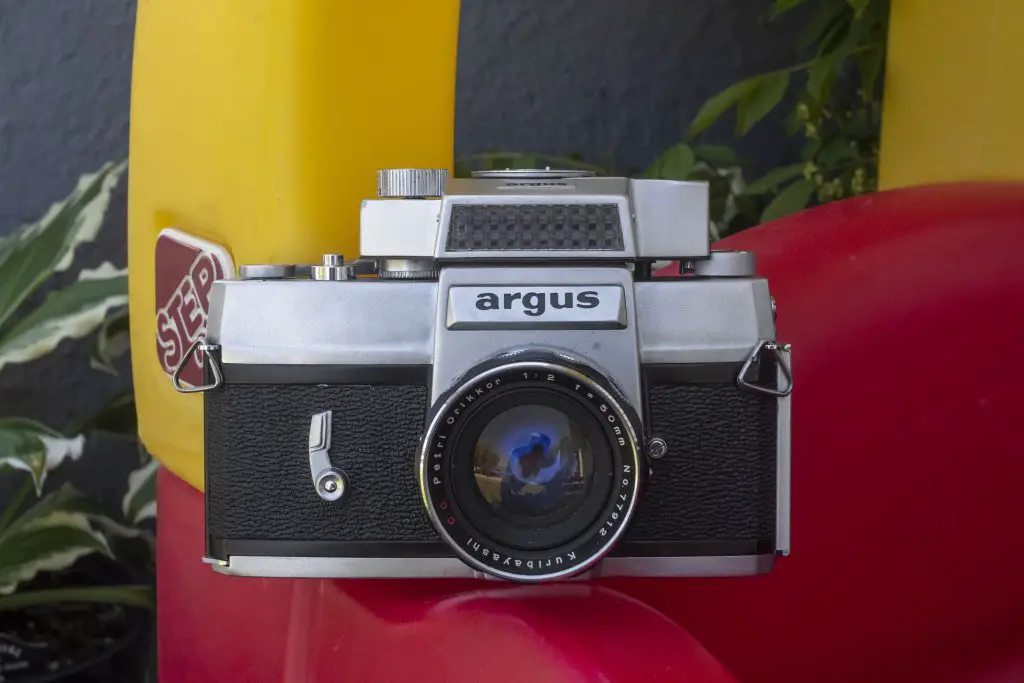
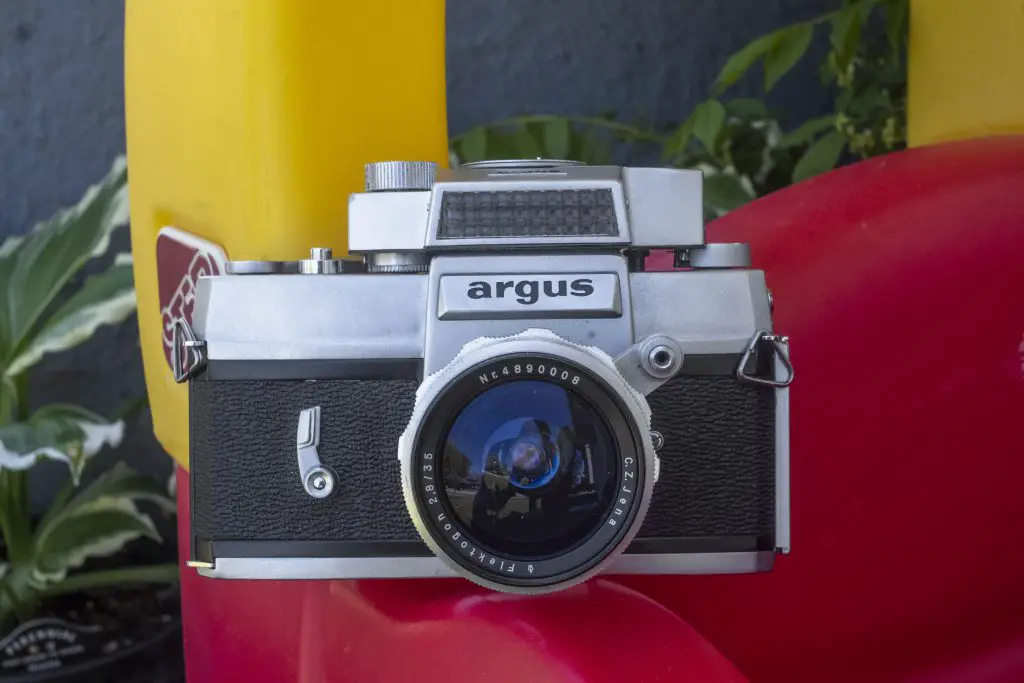
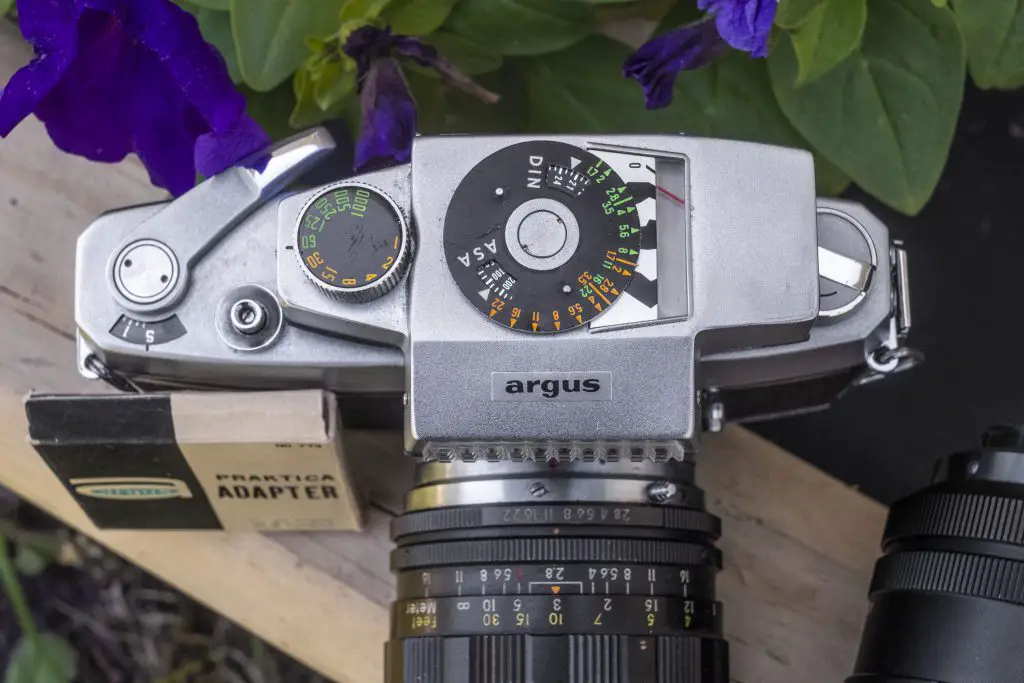

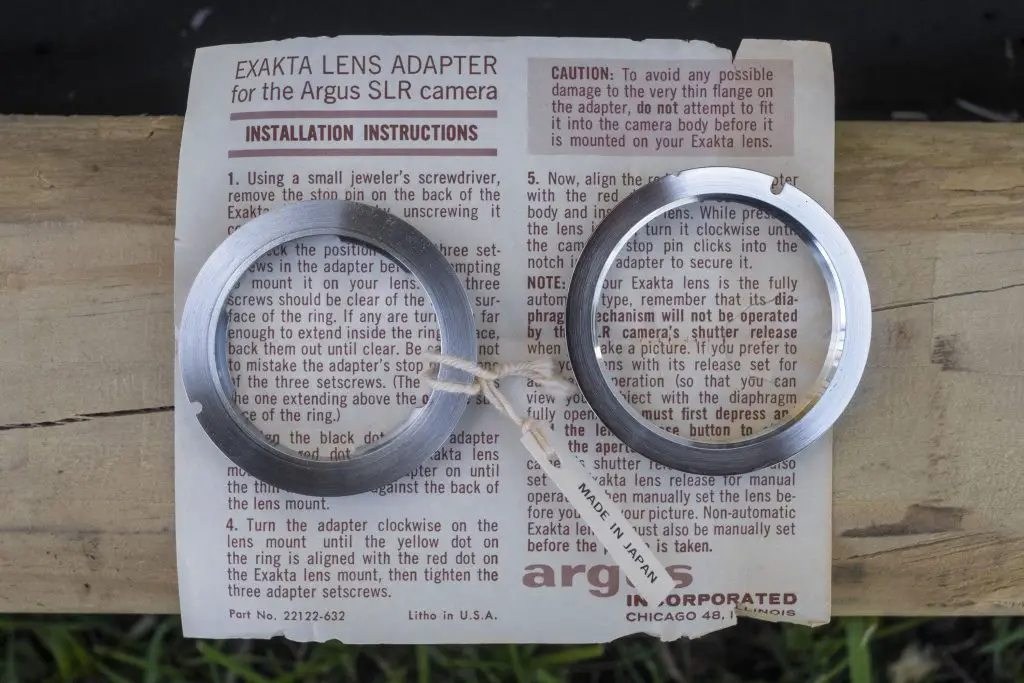






Mike, I wonder just how many variants of the Mamiya Prismat NP there are. Including Mamiya’s own, there are at least three others, the Tower and Argus you illustrate here, and the Reflexa with Exakta Mount and which came with the lovely Canon f1,9/50 with semi-auto pre-set diaphragm. It looks like your Tower 37A must have the Exakta mount, too, judging by the Mamiya lens having the same diaphragm cocking lever and body release pin.
I purchased my first slr in early 1967, and it was the Reflexa. No compatible W/A or Tele lenses were available so I used some inexpensive pre-set lenses, 35mm and 135mm Galaxy brand. These were surprisingly good, even when I look at the negs today. I can’t now recall what was the impetous for disposing of the Reflexa, but I did get the Argus sometime later, and regretted my decision re the Reflexa. The one thing I do remember about it was the weight with the f1.7, but it wasn’t clear to me at the time just how difficult finding additional lenses in the unique mount would be. Needless to say, I soon got rid of the Argus as I found the lens not quite up to the Canon, and why carry around a brick just for an f1.7 lens?
As of Monday, 17th May, 2021 I now own three Reflexa’s, two with the Canon lens and Monday’s acquisition body only, and cheaply owing to it being for parts or repairs due to a faulty DA, and the seller stating that the mirror was very slow to return. Faulty DA’s usually put me off owing to potential shutter malfunctions, but the slow returning mirror was a new one on me. However, I’m very sentimentally attached to the Reflexa, so I took the gamble as it looked good cosmetically. Fortunately, the DA does Work, the issue is with the little push button which doesn’t stay in place, but holding it in it works as expected with no hesitency, and the mirror only required cycling the shutter contiuously for about five minutes.
What is interesting is that the serial number of your Tower and my Reflexa’s all begin with 33xxxxx. Could it be Mamiya numbered all bodies as their own, and Brands changed only the front plate with their brand?
Thanks for another insight into older, lesser known, models.
I found a website once that showed a list of Prismat variants. It didn’t include the Nikkorex F though, so I don’t know how complete it was. I will say, there is an article I think on camera-wiki that suggests a version of the Tower cameras was made with a leaf shutter which I have found not to be accurate. To my knowledge, all the Tower variants all had the Exakta mount on it.
As you probably know, that Canon OM lens is quite a special piece to have. Not many people realize that Canon made a few lenses in other people’s mounts. I read somewhere that the reason this was done was that at the time, both Canon and Mamiya used the same distributor and Canon agreed to make the Exakta mount lens for Mamiya as a favor of some sort.
Finally, I think you nailed it on the serial number. My guess is, all of these cameras came off the same exact assembly line and had sequential serial numbers and were later badged as whatever variant they ended up being. I’ve never attempted to take apart the Argus SLR, but it looks like the badge comes off. Most likely they just affixed whatever badge that shipment was being made for.
That’s cool Mike. I didn’t know Argus made an SLR
Wonder if that yellowing Argus-Sekor 58mm/1.7 lens might be slightly radioactive… like similarly colored Pentax and Nikon lenses?
It’s very possible as the yellowing looks identical to that found on Takumar lenses of the same era. One of these days I should get a Geiger Counter and find out!
The Argus SLR was also sold in Japan, as a Mamiya. You can occasionally see them on ebay, in fact there’s two or three there currently. I read on some website, that the bayonet mount used was intended to be an open standard developed by Mamiya with some other, unnamed manufacturers, but they pulled out leaving Mamiya as the only one to ever use that mount.
Great article on these classic cameras! I have the Tower version with Exakta mount. The camera came 58mm & 35mm lenses. Both are great lenses that I have adapted to my Sony cameras. The camera also came with the 135mm lens but the glass was damaged. The 58mm lens is really a special lens. I wonder if someone has made an adapter to fit these old Argus lenses?
If there is someone who could make an adapter from the Argus SLR to a modern digital, it’s the rareadapters seller on eBay: https://www.ebay.com/str/rareadapters
I checked their store and don’t see one, but I bet if you were to contact them, they might have something. If not though, I know that the 58mm f/1.7 on that camera is a Mamiya made lens which they made in other mounts. If you just want to duplicate the quality of that lens, it would probably be easier to find it in another mount and then adapt that to whatever digital system you use. That said, if you do find someone who can adapt the Argus one, please let me know!